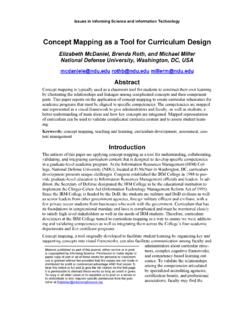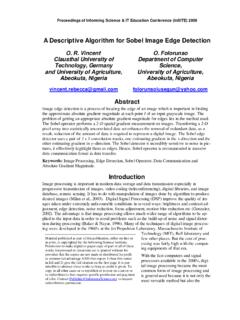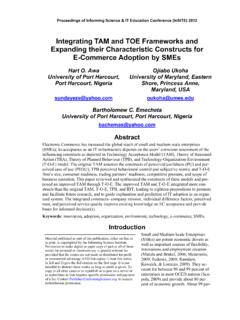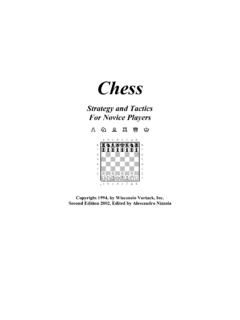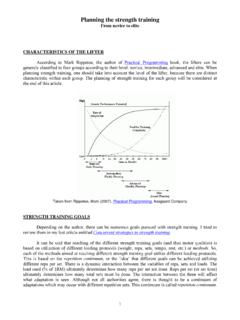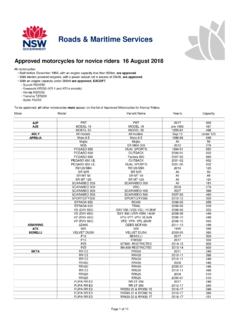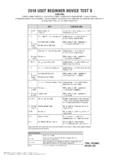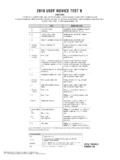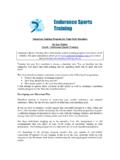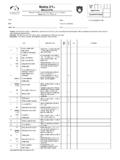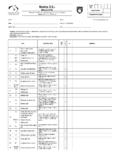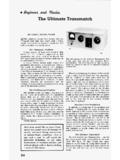Transcription of Data Sources for Scholarly Research: Towards a Guide for ...
1 Proceedings of Informing Science & IT Education Conference (InSITE) 2012. data Sources for Scholarly research : Towards a Guide for novice Researchers Timothy J. Ellis and Yair Levy Nova Southeastern University Graduate School of Computer and Information Sciences Fort Lauderdale, FL, USA. Abstract One of the biggest challenges the novice researcher faces is determining just where and how to start her or his research . During the research design stage, a novice researcher must take into con- sideration three key factors: a) literature; b) research -worthy problem; and c) data . While the role of the problem and literature in research has been explored previously, inadequate attention has been given to the centrality of data and access to collecting data in the context of research design.
2 This paper explores data as a vital element of Scholarly enquiry by outlining the role of data in research in the informing sciences, identifying some issues with access to data collection, and their impact on the design of a proposed research . This paper explores the categories of data , or- ganized in a 2x2 taxonomy: the Qualitative-Quantitative-Indirect-Direct (Q2ID) Taxonomy of data Sources . This paper concludes with examples from literature for some research studies and explanations for the types of data used in the context of the proposed Q2ID Taxonomy of data Sources are provided. Keywords: data Sources , data Categorization, Qualitative vs. Quantitative data , Categories of data , data as a research Element, Access to data Collection, data Source Taxonomy, Types of data , data Measures Introduction One of the biggest challenges the novice researcher faces is determining just where and how to start her or his research (Zikmund, Babin, Carr, & Griffin, 2010).
3 Since the essence of research is making a contribution to the body of knowledge, the literature is certainly an excellent starting point (Levy & Ellis, 2006). One cannot make a contribution to the body of knowledge without being familiar with that body of knowledge first. research must also be motivated by some rea- son beyond the obvious ones associated with meeting the requirements for degree completion, tenure, or promotion; the problem motivating the research is likewise a viable starting point (Ellis & Levy, 2008). A third, highly prag- Material published as part of this publication, either on-line or matic factor must also be considered is: in print, is copyrighted by the Informing Science Institute.
4 Permission to make digital or paper copy of part or all of these the data available to support the research works for personal or classroom use is granted without fee or, more precisely, the researcher's ac- provided that the copies are not made or distributed for profit cess and ability to collect data (Leedy &. or commercial advantage AND that copies 1) bear this notice Ormrod, 2010). The most promising in full and 2) give the full citation on the first page. It is per- research -worthy problem, indisputably missible to abstract these works so long as credit is given. To copy in all other cases or to republish or to post on a server or supported by the literature cannot lead to redistribute to lists requires specific permission and payment to Scholarly enquiry if the researcher of a fee.
5 Contact to request does not have access to the data neces- redistribution permission. sary to conduct that research . All three Distributed Collaborative Learning factors literature, research -worthy problem, and access to data must be taken into considera- tion by the novice researcher early in the design stage of her or his study. The role of the research -worthy problem and literature in research have been explored previously (Ellis & Levy, 2008; Levy & Ellis, 2006). This paper explores the third piece, data , as a vital component of Scholarly enquiry. The target audience for this paper is the novice researcher, such as doctoral students or junior faculty members. In the balance of this introduction, context will be established by briefly exploring two essential factors: the nature of research in the informing sci- ences, and data as an element of research .
6 The second section of the paper expands the definition of data by exploring the different categories of research data . The third section explores potential Sources for the different categories of data identified in section two by identifying examples from the literature of the different data Sources . Finally, a summary and recommendations are pro- vided. research in the Informing Sciences In his seminal work, Cohen (1999) claimed that informing science is a field of inquiry on the process and infrastructure of providing a client with information in a form, format, and schedule that maximizes its effectiveness (p. 215). He outlined three interrelated components of the field: a) the client, b) the delivery system, and c) informing environment.
7 Since informing science represents the nexus of technology, processes, and people, research in that discipline is certainly not monolithic in nature (Gill & Bhattacherjee, 2009). Published enquiries have been conducted from a number of different philosophical perspectives on the meaning and meaningfulness of the results of research . The three most universally accepted perspectives are the positivist, the inter- pretive, and critical research (Kim, 2003). The positivist epistemology, for example, being based on the assumption that physical and social reality is independent of those who observe it, and that observations of this reality, if unbiased, constitute scientific knowledge (Gall, Gall, & Borg, 2003, p.)
8 14), asserts that objective truth can be derived through research . The interpretive per- spective, on the other hand, is based on the assumption that access to reality (given or socially constructed) is only through social constructions such as language (Myers, 1997, p. 241), asserts that reality can be best understood in the context of the meanings assigned by people. A third per- spective, critical research , focuses on the oppositions, conflicts and contradictions in contempo- rary society, and seeks to be emancipatory it should help to eliminate the causes of alienation and domination (Myers, 1997, p. 242). Regardless of the philosophical perspective underlying the research , all Scholarly enquiry has three elements: the applicable, Scholarly literature; a research -worthy problem; and data (Creswell, 2005; Leedy & Ormrod, 2010).
9 As detailed in Figure 1, the literature serves as the foundation for research . research worthy problems are identified and supported through the Scholarly literature, and the applicability and validity of the data is established through the litera- ture. The research worthy problem motivates and justifies the research by answering the question Why is the study being conducted (Ellis & Levy, 2008). The data serves the dual function of limiting and enabling the research (Zikmund et al., 2010). The type of study possible is both indi- cated and restricted by the data available to the researcher. data obviously serves a central func- tion in research . However, just what constitutes data is less obvious. The text below will attempt to address that question.
10 406. Ellis & Levy Figure 1: The Role of data in the Structure of research data as an Element of research The manner in which data is defined is of critical importance (Mertler & Vannatta, 2010). Ac- cording to Leedy and Ormrod (2010), the term data is plural (singular is datum) and derived from the past participle of the Latin verb dare, which means to give (p. 94). Too narrow a defi- nition, such as restricting data to only those things that can be measured with numerical precision, can restrict the meaning of research in informing science to such an extent that few, if any, out- side academe would find the results of value. On the other hand, too broad a definition, such as including in data anything that one purports to observe, could expand the meaning of research to such an extent that any assertion one makes could be categorized research .

